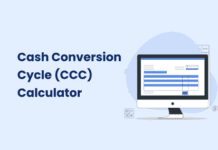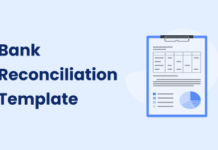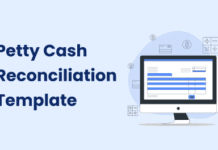When it comes to automating your accounts payable workflow, AP software solutions share similar capabilities such as tax form processing, electronic payments transfers, and OCR invoice processing. OCR, short for Optical Character Recognition, is a technology that converts digital documents into editable files with searchable text. Various industries, including medical records, banking, and AP, use this technology for data processing.
In recent years, AP has evolved from a cost center to a revenue driver. OCR technology and automated invoice processing play a crucial role in this transformation. Every automated AP system includes OCR invoice processing. This feature allows AP software to extract data from digital invoices automatically, eliminating manual data entry.
In this article explore what is OCR invoice processing, how it works, and its key benefits.
What is OCR Invoice Processing?
OCR invoice processing is a method businesses use to automate the extraction of data from vendor invoices. Invoices are scanned or photographed using OCR technology, and the text is converted into machine-readable text. The extracted data can then be used to populate fields in accounting or ERP systems, reducing the need for manual data entry.
By implementing OCR invoice processing, businesses can significantly reduce the time and effort required for invoice processing. This technology helps improve accuracy by minimizing human errors during manual data entry. Additionally, OCR invoice processing can help businesses streamline their accounts payable processes, allowing for faster invoice approvals and payments.
How Does OCR Invoice Processing Work?
OCR invoice processing automates the extraction of data from invoices, converting scanned or digital invoices into machine-readable text. Here’s a simplified explanation of how it works:
Document Intake: Invoices are either scanned or digitally uploaded into the OCR software, where they are processed for data extraction.
Image Enhancement: The software enhances the quality of scanned images by removing noise, correcting rotations, and improving overall clarity.
Text Extraction: OCR technology converts the text on the invoice into machine-readable format. It identifies and extracts key information such as invoice dates, due dates, line items, and invoice totals.
Data Validation: Extracted data is validated against predefined rules to ensure accuracy and consistency. For example, the system may verify that the invoice total matches the sum of the line items.
Manual Verification (if necessary): In some circumstances, extracted data may need to be manually checked for validity. Employees examine the results, make appropriate changes, and resolve any inconsistencies.
Data Export: Once the data has been correctly retrieved and confirmed, it is transferred to accounting or ERP systems for further processing and payment.
Archiving: The original invoice, together with the extracted data, is saved for auditing and reference.
What are the Different Methods of OCR Invoice Processing?
OCR invoice processing can be accomplished through various methods, each offering unique advantages:
Templates: Using predefined templates for known vendors helps extract data efficiently, especially for invoices with consistent formats. However, it may struggle with diverse layouts.
Machine Learning (ML): ML systems can detect patterns and extract data from bills without using predefined templates. This strategy is more flexible to different layouts but may need more initial training.
Cloud-Based OCR: Cloud-based solutions offer flexibility and scalability. They can be accessed remotely, making them ideal for businesses with multiple locations or remote teams. Additionally, cloud solutions often come with regular updates and maintenance.
On-Premise OCR: On-premise OCR tools are installed and run locally on a company’s servers. Some companies prefer this method for compliance and data security reasons, as it allows them to have full control over their data and infrastructure.
Each method has its strengths and may be more suitable depending on the specific needs and preferences of a business.
Benefits of Utilizing OCR in Invoice Processing
Here are some key advantages of implementing OCR to streamline invoice processing:
Mitigates Errors
OCR technology significantly reduces the risk of errors in data entry by accurately capturing data from invoices. This ensures that financial records and payments are precise and reliable.
Saves Man-hours
By automating data extraction, OCR speeds up the invoice processing workflow. This allows businesses to process invoices faster, take advantage of early payment discounts, and avoid late payment penalties.
Identifies Discrepancies
OCR systems frequently contain validation criteria to detect errors or inconsistencies in the extracted data. This validation method improves the integrity of the retrieved data while decreasing the likelihood of oversights.
Promotes Cost Saving
Automating data entry and validation with OCR reduces the need for manual labor, leading to significant cost savings for businesses. Additionally, faster invoice processing can result in fewer late payment penalties, further contributing to cost savings.
Enhances Compliance
OCR invoice processing solutions often include robust archiving and document management features. This ensures that all invoices and related documents are stored securely and can be easily accessed for auditing or compliance purposes. By maintaining an audit trail of financial transactions, businesses can ensure compliance with regulatory requirements.
Improves Vendor Relationships
Prompt invoice processing through OCR can lead to improved vendor relationships. Suppliers appreciate timely payments, which can result in better payment terms and discounts for the business. This can lead to a more positive and collaborative relationship with vendors.
Eliminates Data Security Risks
Storing invoices electronically with OCR enhances data security and access control. This reduces the risk of lost or misplaced invoices and ensures that sensitive financial information is protected from unauthorized access.
Enables Effortless Searchability
OCR invoices are digitized and searchable, making them easier to audit. Businesses may rapidly search for particular bills or information within invoices, speeding up the audit process and saving time.
Promotes Scalability
OCR tools can handle a high volume of invoices, making them a scalable solution for businesses of all sizes. Whether a business receives a few invoices a month or thousands, OCR can efficiently process them without compromising accuracy or efficiency.
Offers Remote Accessibility
Cloud-based OCR solutions offer the flexibility to access and process invoices from anywhere. This is particularly beneficial for businesses with remote teams or multiple locations, as it allows for seamless collaboration and access to invoice data.
Streamline Invoice Processing with OCR Powered by Machine Learning
OCR invoice processing is a valuable tool for automating accounts payable workflows, especially for digital invoices. Digital invoices without OCR still require manual data entry for processing, highlighting the importance of OCR technology. However, OCR technology alone has some limitations that should be considered:
- OCR extracts data from PDF invoices, but placing this data into the correct fields in an accounts payable system requires additional steps.
- Invoices vary in format, and OCR may need more context to interpret the meaning of extracted data.
- Simply extracting data from invoices is not enough; a system is needed to transfer this data accurately to the AP software for seamless processing.
OCR powered by ML can overcome the limitations of traditional OCR technology. ML, a component of AI, enables software applications to analyze data and solve problems with minimal human intervention. In OCR, ML helps by analyzing the structure of invoices to identify patterns.
Together, OCR with ML can achieve:
- Extract line-item data (e.g., invoice number, vendor details, total amount, quantity) and enter it into the appropriate fields in the AP system.
- Capture and read invoice data from various formats like PDFs, emails, and scanned paper invoices.
- Automatically detect and flag discrepancies between the vendor invoice, purchase order, and goods received notes.
- Route the invoice to the correct approver for approval without manual intervention.
- Match the correct general ledger codes to specific vendors or transaction types.
Overall, OCR enhanced by ML and AI can significantly improve the efficiency and accuracy of invoice processing in accounts payable.
Peakflo’s OCR Invoice Processing
Incorporating OCR technology into your invoice processing workflow can revolutionize how your organization handles its accounts payable tasks. With Peakflo’s Bill and OCR automatically capture invoice details and significantly reduce the time and effort traditionally required for manual data entry. This automation not only enhances efficiency but also improves accuracy by minimizing the risk of human error.
Peakflo’s OCR capabilities extend beyond simply extracting basic information such as invoice numbers and amounts. It can also capture line item details, including names, discounts, and taxes, with a high level of accuracy. This means that your organization can benefit from a more comprehensive and detailed digital record of its invoices, facilitating better financial analysis and decision-making.
One of the key advantages of using Peakflo for OCR invoice processing is its ability to flag duplicate invoices automatically. This feature helps prevent overpayments and ensures that your organization maintains tight control over its finances. By streamlining the data entry process and reducing the likelihood of errors, Peakflo empowers your team to focus on more strategic and value-added tasks, ultimately driving efficiency and productivity across your accounts payable function.









![Why AI Sales Calls Are Making Good Sales Reps Even Better [2025 Guide] ai sales calls](https://cdn-kmjmp.nitrocdn.com/YvtqmrsiHUxqerlSiZgbfzqqTARWTElr/assets/images/optimized/rev-834053b/blog.peakflo.co/wp-content/uploads/2025/09/65168cf6-3001-4733-8cbc-12d5684cf449-218x150.webp)

































